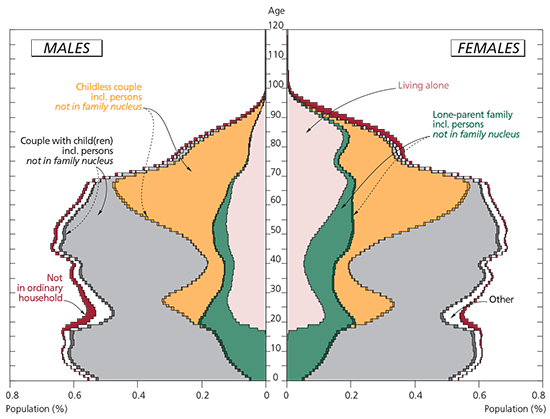Family structure pyramid

Reading the graph
Using census data on family relationships between people living in the same dwelling, we can determine the family structure of all French households. This distribution of family types is shaped by the family behaviours of adults, and it varies over the life course differently for women and men.
Read from bottom to top, the pyramid reveals the ages when young adults leave the parental home (from age 18), form a union (up to age 28), have their children, in most cases with a partner (up to age 45), separate from their partner, experience their children’s decohabitation (up to age 60), and last, enter residential care (from age 80).
Read horizontally, it reveals the differences between males and females. The pyramid is almost perfectly symmetrical before age 18, but as women leave home and form a union at younger ages than men, it becomes asymmetrical between ages 19 and 29. Beyond age 60, excess male mortality and the large share of women living alone lead to further dissymmetry.
As children under 18 grow older, the share of those living in lone-parent families increases due to parental separation. But most minors live in households of the type ‘couple with child(ren)’ that include children living with both parents and those living in stepfamilies.
Source: Recent Demographic Trends in France: Situations and Behaviours of Minors
Didier Breton, Magali Barbieri, Nicolas Belliot, Hippolyte d’Albis, Magali Mazuy in Population 4, 2020
On line:April 2021
